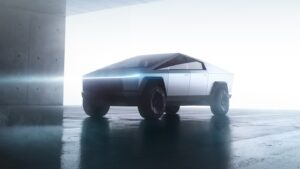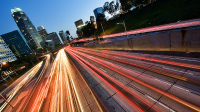 As I wrote last month there are now two Electric Vehicle (EV) revolutions happening, simultaneously, around the U.S.
As I wrote last month there are now two Electric Vehicle (EV) revolutions happening, simultaneously, around the U.S.
They are fundamentally at odds.
On one side we have electric cars. These are just like cars running on fossil fuels. EVs can be just as big, even bigger. They can do equal environmental damage because their weight causes tires to shred as they roll. EVs They run on the same wide roads as other cars, and thus require the same commitment to expensive infrastructure. They push people ever further from central cities, cutting them off from their fellow citizens, destroying the natural environment.
 In Texas my wife’s ancestral home of Flatonia is 100 miles from Houston, San Antonio or Austin. It’s becoming a suburb, ranches split into ranchettes, ranchettes into subdivisions, with two cars in every garage.
In Texas my wife’s ancestral home of Flatonia is 100 miles from Houston, San Antonio or Austin. It’s becoming a suburb, ranches split into ranchettes, ranchettes into subdivisions, with two cars in every garage.
On the other side we have electric bikes, electric cargo vans, and everything in between. The vans eliminate a lot of car trips. The bikes, and other devices, can eliminate most of the rest. A strong rental market, with the car you rent sized to the load you’re carrying, can reduce this further. My e-bike uses less energy than my old road bike, because food is energy. I don’t use as much food energy when I ride to get more. I think my health care costs are lower, too.
You can see the impact on my hometown of Atlanta. There are growing political movements for bike paths and for urban density, especially given the economic success of the Atlanta Beltline. If my kids don’t need a car, they can afford a city apartment or townhouse. Gentrification pushes out the poor in favor of the upwardly mobile, changing our demographics and our politics.
But getting from here to there is a struggle, thanks to the first EV revolution.
The Fight
 You can see the contradictions by looking at local issues.
You can see the contradictions by looking at local issues.
Even “liberal” neighborhoods resist increased urban density and the resulting urban infrastructure. Bike lanes are being rejected in New York City, because people there want the space for parking.
Those who call themselves “new urbanists,” advocating for more rail, density, and open bike access to the road systems, are still outnumbered by lovers of suburban “freedom.” Progress is very slow, and reversals are common.
But markets are stubborn things. Suburbs are being built 40 miles, and more, from urban centers. Most young people can’t afford to move there. Only those with children, a dwindling minority, are willing to do so, and they are (almost by definition) now upper middle class.
Meanwhile, even suburbs can have centers. Connect them to their outskirts with biking infrastructure and change can happen. The cost of that infrastructure is low and, once it’s built, car trips can be reduced.
Don’t even get me started on self-driving cars.
Technology, demographics, and market forces are all pointing toward the second electric revolution, even while the first continues. It’s a fascinating story worth following more closely.










